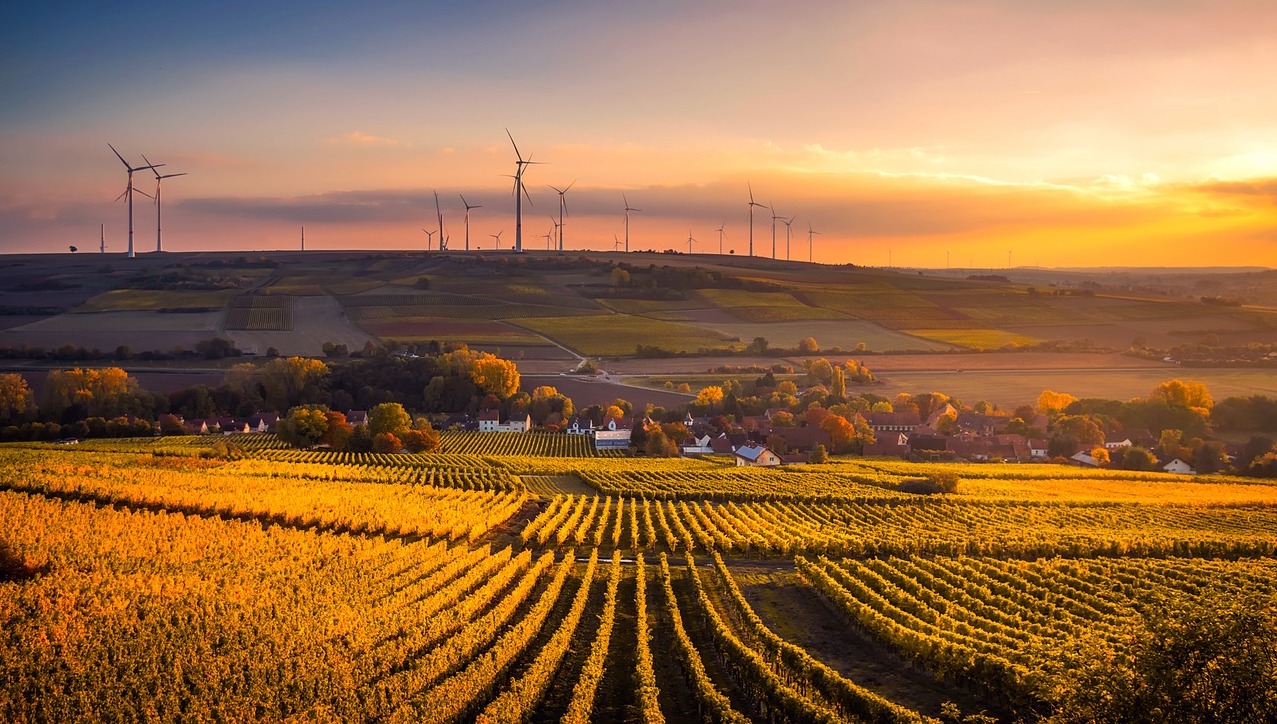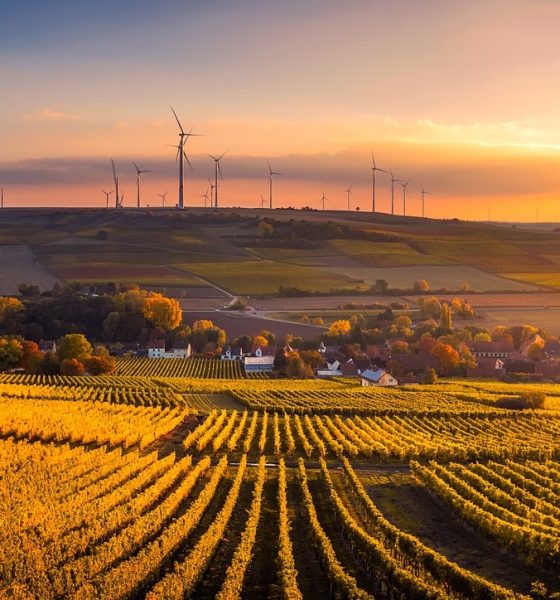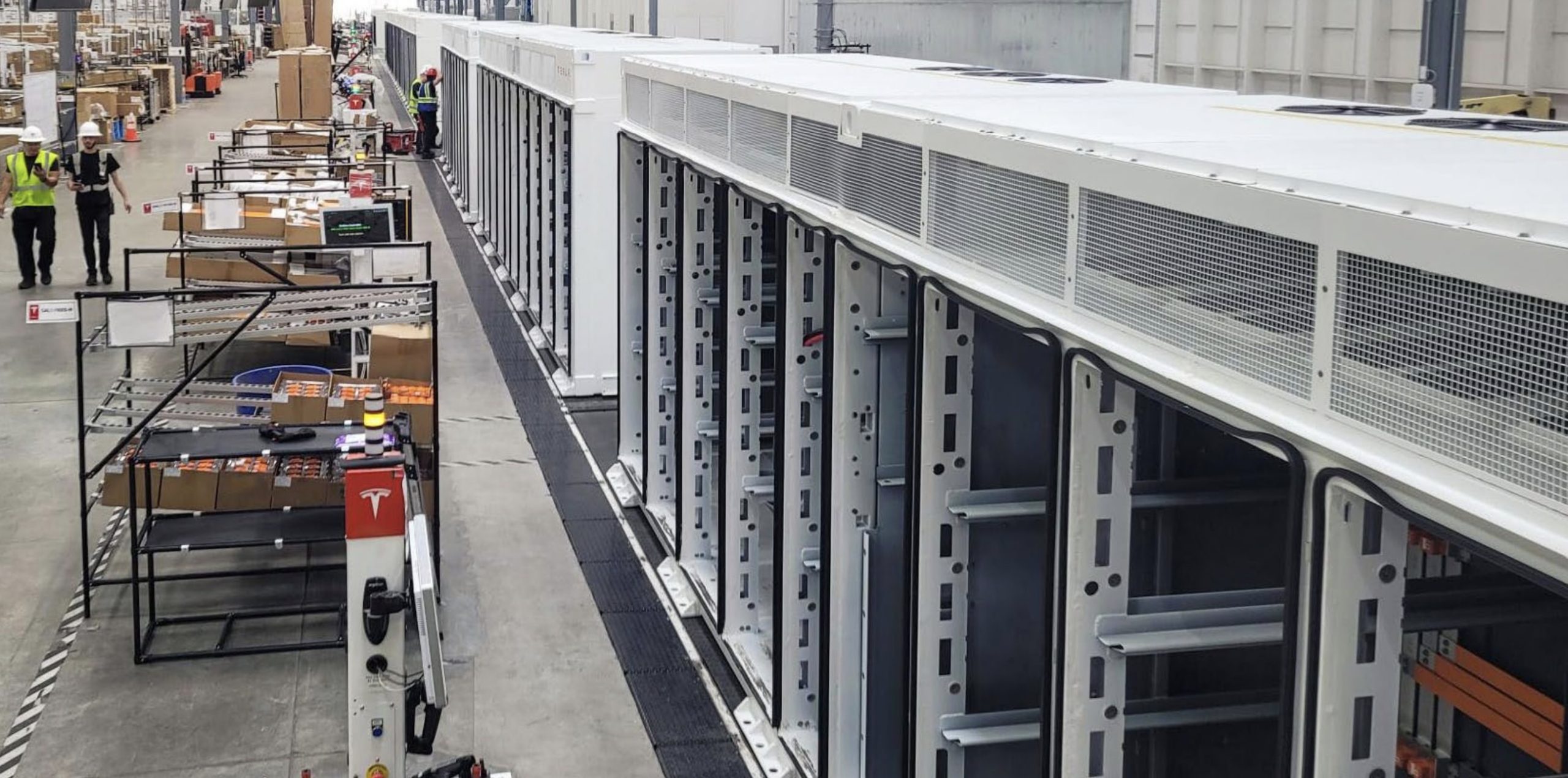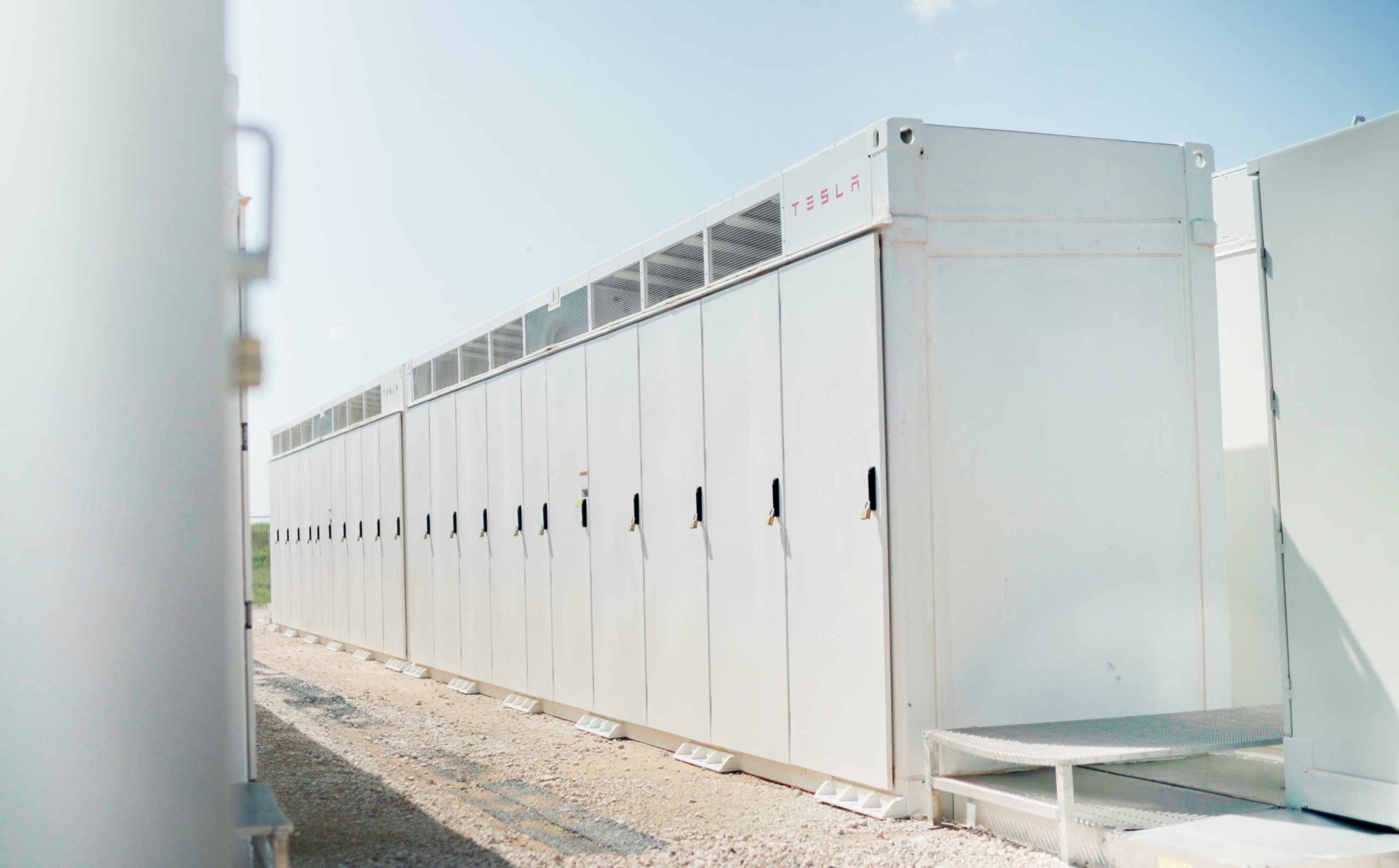

Energy
Renewable energy is benefitting from oil’s coronavirus-induced slump
Oil companies have arguably felt the effects of the COVID-19 pandemic worse than any other industry in the world. Several companies that are considered to be big names in the oil sector are reporting substantial drops in earnings in their most recent quarterly results as the pandemic has caused a collapse in demand.
With that, renewable energy companies, like Tesla and others, are beginning to feel the positive effects of oil becoming less desirable by consumers. The New York Times recently reported that renewable energy sources would generate a record of 20.7% electricity in the U.S., up 2.7% from 2019’s share.
As renewable energy use increases, other forms of energy will inevitably fall, and oil-focused companies are forced to adapt to the consumer’s demand for clean sources of power.
BP recently announced that it would slash oil production by 40% and turn its focus to sustainable forms of energy for the future. The company said that it would increase its low carbon investments by ten-fold to $5 billion by 2030. The London-based energy company currently holds a zero-emissions promise by 2050, CNN said.
“This coming decade is critical for the world in the fight against climate change, and to drive the necessary change in global energy systems will require action from everyone,” a company statement from BP said.
Meanwhile, Exxon and Chevron both took major hits during the second quarter. Exxon announced that several of its expansion projects would be delayed after it failed to generate any positive cash flow during Q2, Bloomberg reported.
Exxon’s Q2 2020 Earnings Report indicates that the company’s total net income loss was -$1.080 billion.
Chevron, on the other hand, announced that it would have multibillion-dollar writedowns on its access for the second time in the last 12 months. It will also cut the equivalent of 5% of its total output worldwide during Q3, and delay plans to ramp up production from its Permian Basin, a United States oil field located in Western Texas and Southeastern New Mexico.
What does all of this mean for renewables?
As the world continues to transition away from carbon-emitting fuel sources and moves toward Earth-friendly forms of power, the renewable energy sector will see growth in its consumer base and profitability. COVID-19 has done significant damage to many corporations and industries as a whole. For example, automotive sales as a whole have declined with many automakers across the world, reporting substantial drops in purchases.
Research firm IHS Markit predicts that car sales are expected to decline by at least 15.3% in the U.S. in 2020. However, sustainable transportation companies are seeing growth. Tesla is one example of that.
Tesla has beaten Wall Street’s estimates in both Q1 and Q2. The company has also managed to turn a profit in both quarters in 2020 as well. The increasingly noticeable shift in energy interest is turning toward sustainable and eco-friendly sources, which is a win for both the consumer and the Earth.
A study from Deloitte stated that in April 2019, renewable energy outpaced coal by providing 23% of U.S. power generation. Coal only provided 20% of the share. Also, renewable energy consumption by residential consumers increased by 6%, while commercial customers increased their usage by 5%.
The simple fact is, renewable energy is the future of human civilization. Fossil fuels and environmentally damaging sources of energy will continue to damage the Earth, pushing the world into the depths of climate hell, while rich oil companies continue to turn unruly profits.
But these companies are feeling the effects of a decrease in demand. The reductions seem to be acting as a wake-up call that indicates their focuses must shift. Their most recent Earnings results are indicative of a shift in what kind of energy people are more interested in, and it seems that renewables are going to be the preference for consumers moving forward.

Energy
Tesla starts hiring efforts for Texas Megafactory
Tesla’s Brookshire site is expected to produce 10,000 Megapacks annually, equal to 40 gigawatt hours of energy storage.

Tesla has officially begun hiring for its new $200 million Megafactory in Brookshire, Texas, a manufacturing hub expected to employ 1,500 people by 2028. The facility, which will build Tesla’s grid-scale Megapack batteries, is part of the company’s growing energy storage footprint.
Tesla’s hiring efforts for the Texas Megafactory are hinted at by the job openings currently active on the company’s Careers website.
Tesla’s Texas Megafactory
Tesla’s Brookshire site is expected to produce 10,000 Megapacks annually, equal to 40 gigawatt hours of energy storage, similar to the Lathrop Megafactory in California. Tesla’s Careers website currently lists over 30 job openings for the site, from engineers, welders, and project managers. Each of the openings is listed for Brookshire, Texas.
The company has leased two buildings in Empire West Business Park, with over $194 million in combined property and equipment investment. Tesla’s agreement with Waller County includes a 60% property tax abatement, contingent on meeting employment benchmarks: 375 jobs by 2026, 750 by 2027, and 1,500 by 2028, as noted in a report from the Houston Business Journal. Tesla is required to employ at least 1,500 workers in the facility through the rest of the 10-year abatement period.
Tesla’s clean energy boom
City officials have stated that Tesla’s arrival marks a turning point for the Texas city, as it highlights a shift from logistics to advanced clean energy manufacturing. Ramiro Bautista from Brookshire’s economic development office, highlighted this in a comment to the Journal.
“(Tesla) has great-paying jobs. Not just that, but the advanced manufacturing (and) clean energy is coming to the area,” he said. “So it’s not just your normal logistics manufacturing. This is advanced manufacturing coming to this area, and this brings a different type of job and investment into the local economy.”
Energy
Tesla and Samsung SDI in talks over new US battery storage deal: report
The update was related by industry sources and initially reported by South Korean news outlets.

Recent reports have suggested that Tesla and Samsung SDI are in talks over a potential partnership to supply batteries for large-scale energy storage systems (ESS).
The update was related by industry sources and initially reported by South Korean news outlets.
ESS batteries to be built at Samsung’s Indiana plant
As noted in a report from Korea JoongAng Daily, the demand for energy storage systems has been growing rapidly in North America, thanks in no small part to the surge in AI investments across numerous companies. With this in mind, Tesla has reportedly approached Samsung SDI about a potential battery supply deal.
The deal is reportedly worth over 3 trillion Korean won (approximately $2.11 billion) and will span three years, according to The Korea Global Economic Daily. A battery supply deal with Samsung SDI could make sense for Tesla as the company already has a grid-scale battery, the Megapack, which is perfect for industrial use. Samsung SDI could simply supply cells for the EV maker.
Production of the batteries would reportedly take place at Samsung SDI’s joint venture factory with Stellantis in Indiana, which is currently under construction. Samsung SDI recently announced plans to use part of that plant’s EV lines to produce cells for ESS, with a targeted capacity of 30 GWh by the end of next year.
Tesla and Samsung’s partnership
At present, only a handful of manufacturers, including Korea’s LG Energy Solution, Samsung SDI, SK On, and Japan’s Panasonic, are capable of producing energy storage-scale batteries domestically in the United States. A Samsung SDI official issued a comment about the matter, stating, “Nothing has been finalized regarding cooperation with Tesla.”
The possible energy storage system deal adds another layer to Tesla’s growing collaboration with Samsung, which is already in line as a partner in the upcoming production of Tesla’s AI5 and AI6 chips. Early sample manufacturing of the AI6 is expected to begin in South Korea, with mass production slated for Samsung’s Texas-based Taylor foundry when it starts operations.
The AI6 chip will power Tesla’s next wave of high-volume projects, including the Optimus humanoid robot and the autonomous Cybercab service. Musk has called the partnership with Samsung a “real collaboration,” adding that he personally plans to “walk the line” at the Taylor facility to speed up progress.
Energy
Tesla VP hints at Solar Roof comeback with Giga New York push
The comments hint at possible renewed life for the Solar Roof program, which has seen years of slow growth since its 2016 unveiling.

Tesla’s long-awaited and way underrated Solar Roof may finally be getting its moment. During the company’s Q3 2025 earnings call, Vice President of Energy Engineering Michael Snyder revealed that production of a new residential solar panel has started at Tesla’s Buffalo, New York facility, with shipments to customers beginning in the first quarter of 2026.
The comments hint at possible renewed life for the Solar Roof program, which has seen years of slow growth since its 2016 unveiling.
Tesla Energy’s strong demand
Responding to an investor question about Tesla’s energy backlog, Snyder said demand for Megapack and Powerwall continues to be “really strong” into next year. He also noted positive customer feedback for the company’s new Megablock product, which is expected to start shipping from Houston in 2026.
“We’re seeing remarkable growth in the demand for AI and data center applications as hyperscalers and utilities have seen the versatility of the Megapack product. It increases reliability and relieves grid constraints,” he said.
Snyder also highlighted a “surge in residential solar demand in the US,” attributing the spike to recent policy changes that incentivize home installations. Tesla expects this trend to continue into 2026, helped by the rollout of a new solar lease product that makes adoption more affordable for homeowners.
Possible Solar Roof revival?
Perhaps the most intriguing part of Snyder’s remarks, however, was Tesla’s move to begin production of its “residential solar panel” in Buffalo, New York. He described the new panels as having “industry-leading aesthetics” and shape performance, language Tesla has used to market its Solar Roof tiles in the past.
“We also began production of our Tesla residential solar panel in our Buffalo factory, and we will be shipping that to customers starting Q1. The panel has industry-leading aesthetics and shape performance and demonstrates our continued commitment to US manufacturing,” Snyder said during the Q3 2025 earnings call.
Snyder did not explicitly name the product, though his reference to aesthetics has fueled speculation that Tesla may finally be preparing a large-scale and serious rollout of its Solar Roof line.
Originally unveiled in 2016, the Solar Roof was intended to transform rooftops into clean energy generators without compromising on design. However, despite early enthusiasm, production and installation volumes have remained limited for years. In 2023, a report from Wood Mackenzie claimed that there were only 3,000 operational Solar Roof installations across the United States at the time, far below forecasts. In response, the official Tesla Energy account on X stated that the report was “incorrect by a large margin.”









